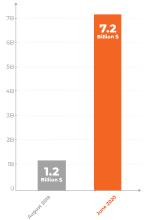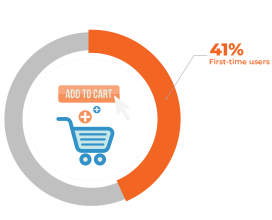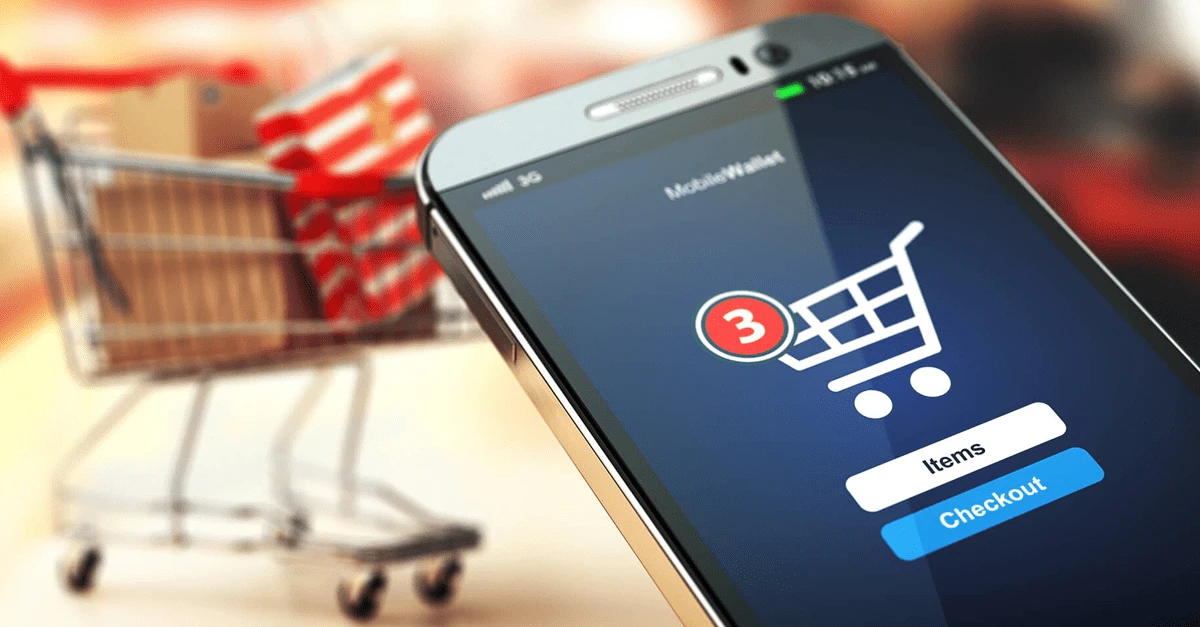The impact of COVID-19 on the grocery experience
This month officially marks one year since the United States was impacted by the COVID-19 pandemic, including the grocery and retail industry.
In a matter of twelve months, consumer behavior has drastically changed, influencing the shopping experience and requiring retailers to pivot quickly. In particular, with grocery shopping, customers are spending less time perusing the aisles and more time online grocery shopping.


In fact, U.S. online grocery sales increased from $1.2 billion in August 2019 to $7.2 billion in June 2020. In the wake of the pandemic, first-time users now consist of 41% of U.S. online grocery shoppers!
An increase in online grocery shopping is not the only major transformation that occurred during this unprecedented economic tsunami. As restaurants continue to remain closed or have limited capacity, people are trying their hand at cooking at home.
The shift from dining-out to dining-in has caused consumers to experiment with new buying channels and products. For example, consumers are gravitating towards at-home meal kits, a subscription service that sends pre-portioned ingredients directly to their door. These at-home eating habits, though influenced by COVID-19, are likely to stay even after restrictions have lifted.
To emerge as winners, grocery retailers need to adopt robust strategies to better understand consumer behavior, preferences, and demographics. But what’s the best way to accomplish this?
An increase in online grocery shopping is not the only major transformation that occurred during this unprecedented economic tsunami. As restaurants continue to remain closed or have limited capacity, people are trying their hand at cooking at home.
The shift from dining-out to dining-in has caused consumers to experiment with new buying channels and products. For example, consumers are gravitating towards at-home meal kits, a subscription service that sends pre-portioned ingredients directly to their door. These at-home eating habits, though influenced by COVID-19, are likely to stay even after restrictions have lifted.
To emerge as winners, grocery retailers need to adopt robust strategies to better understand consumer behavior, preferences, and demographics. But what’s the best way to accomplish this?
Implementing targeted promotions
The spike in online shopping has caused a shift in consumer behavior, and in many ways blindsided retailers. What was thought to take as many as five years, occurred in five months, requiring retailers to keep pace and capitalize on the benefits of online shopping.

The graph above shows the spike in curbside pick-up and delivery in March 2020, the beginning of the COVID pandemic. Since then, there has been a steady increase in both options as a result of increased online shopping.
For grocers in particular, online grocery platforms can track past purchases, view substitutions the consumers made within their online cart, monitor items removed from their cart, and more. This impressive amount of data allows for grocers to see into their consumers’ brains in ways they couldn’t have done with in-person shopping. The result? A need for more sophisticated targeted promotions.
If done accurately, targeted promotions have the opportunity to influence shopping behavior, increase sales, and create more lifetime loyalty customers.
If done accurately, targeted promotions have the opportunity to influence shopping behavior, increase sales, and create more lifetime loyalty customers.
How to run successful targeted promotions
Cognira believes the following functionalities must be integrated into a capable system to run successful targeted promotions:
- A cloud native solution that can be scaled to manage the large data sets at the lowest levels of granularity (think BIG data, such as digital shoppers data, loyalty customer data, demographics data, etc.)
- An end-to-end promotion process with the customer at the forefront of all decisions. The promotion process must incorporate all areas from planning, to forecasting, to effectiveness.
- Utilize trained ML/AI models. The number of decisions for targeted promotions reaches the trillions. Successful targeting and analysis can only be achieved by leveraging the latest technology and trained ML/AI models.
Takeaways
If COVID-19 has shown the world anything, it’s to expect the unexpected. What may have been predicted to change in a few years could happen in an instant. With grocers in particular, we saw a huge shift in the online shopping experience. By tapping in to targeted promotions, grocers have an incredible opportunity to truly understand their consumers buying habits and ultimately stand-out from their competitors.

